Apuntes sobre el Mitraismo
Enrique RAVELLO
Ex: http://identidadytradicion.blogia.com/
La historiografía utiliza el término de «cultos mistéricos» para todo el conjunto de formas religiosas que, procedentes de Oriente, irrumpen en el Imperio romano tardío. El engañoso término de cultos mistéricos podría hacernos pensar en una unidad interna de los mismos; nada más lejos de la realidad, poco tenían que ver entre sí los cultos a Attis, Cibeles, Serapis, Isis o Júpiter - Amón , pero si uno de ellos merece mención aparte es, sin duda, el culto a Mitra.
Es precisamente lo que le diferencia del resto lo que le hace interesante para nosotros y lo que motiva el sentido de este artículo: a diferencia del resto de divinidades «orientales» llegadas a la Urbs desde el cambio de Era, Mitra sólo tiene de «oriental» la procedencia geográfica: Persia, siendo una de las divinidades que los indoeuropeos de origen nordeuropeo (medos, persas, hindúes y mitanios) llevaron a Asia durante sus migraciones e invasiones de aquellas tierras. Divinidad indoeuropea que, como tal no podía ser extraña a los romanos, los que pronto la asimilaron con sus dioses solares; así Mitra no era uno más de los cultos de «religiosidad segunda» del Bajo imperio , sino que propuso una posibilidad de enderezamiento espiritual -siguiendo el concepto evoliano- en un momento en que la Tradición romana parecía haber entrado en una fase de crisis
Mitra y su ascesis son profundamente indoeuropeos :«Los misterios mitraicos nos llevan al seno de la gran tradición mágica occidental , a un mundo todo él de afirmaciones , todo de luz y de grandeza , de una espiritualidad que es realeza y de una realeza que es espiritualidad , a un mundo en el que todo lo que es huída de la realidad , ascesis , mortificación en humildad y devoción , pálida renuncia y abstracción contemplativa , no tienen ningún lugar . Es la vía de la acción de la potencia solar» (1).
MITRA : DEL MUNDO INDO-IRANIO A ROMA.
Mitra como divinidad ario-irania
Para determinar los orígenes de Mitra hay que remontarse a la religión preavéstica donde aparece junto a Varuna y Surya entre los dioses soberanos o de la primera función indoeuropea. Mitra preside las alianzas y asegura la soberanía de los persas en las tierras recientemente conquistadas, asegura también la feliz doma de animales (2). Es un dios común a los indo-arios de la India y Persia, pero entre estos últimos tiene una función más guerrera que entre los primeros. Su nombre significa a la vez «alianza» y «el amigo» (3) . Mitra aparece en el panteón de tres pueblos indoeuropeos étnicamente muy relacionados: indo-arios, iranios y mitanos, de los que todo hace pensar que se trató de una rama de los indo-arios que se desgajó hacia zonas más occidentales. Siempre aparece como divinidad de la primera función junto a Varuna con quien está en una relación de complementariedad, en todos los sentidos «si los principios conjuntos se consideran en su reciprocidad, el Dios manifestado es el poder masculino y la Divinidad no manifestada es el poder femenino, reserva inagotable de toda posibilidad incluida en la manifestación: es pues Mitra, quien fecunda a Varuna (PB XXX10,10)» (4).
Etimológicamente la raíz de su nombre sería la indoeuropea *mei/*moi- con la idea de intercambio, seguido del instrumental -tra. Ésta es al menos la opinión de Meillet y la que más consenso tiene entre los estudiosos. Así Mitra inicialmente habría sido el garante de los acuerdos, el orden del mundo y del orden social, en definitiva de la relación de los dioses con los hombres y de éstos entre ellos mismos. Mitra engloba los conceptos de amigo y de contrato, y, siguiendo a G Bonafonte la evolución conceptual habrá comenzado desde esa raíz *mei/* moi (intercambio) -obligación mutua (por intercambio de bienes) -amigo, amistad - dios Mitra (5). Siendo el garante de la palabra dada, y, en definitiva, de las relaciones entre los dioses y los hombres y de éstos entre sí. Mitra es quien «sostiene el cielo y la tierra» (Rg Veda, 3, 59).
En el espacio temporal que va desde la época védica hasta la reforma zoroastriana, la figura de Mitra también experimentará ciertos cambios, más bien matices, en la naturaleza y función de su divinidad.
En el mundo védico, Mitra y Varuna son las dos caras complementarias (que no antitéticas) de la función soberana del panteón indoeuropeo, una relación semejante en el mundo latino sería la de Rómulo- Numa (6). El Mitra védico encarna los aspectos jurídico soberanos, luminosos, siendo un dios cercano al mundo y a los hombres «la función de este culto (el de Mitra) es por lo tanto la de orientar religiosamente y consolidar la cohesión familiar, de amistad, social y, por lo tanto, la red de relaciones interpersonales que constituyen el tejido constitutivo de la vida de una tribu, de un pueblo, de una etnia» (7). Por su parte, Varuna encarna el aspecto mágico, violento, invisible y lejano.
Para conocer la figura del Mitra del mundo iranio antiguo, tenemos una gran escasez de fuentes para el periodo más arcaico. Durante la predicación de Zaratustra , todos los dioses del panteón persa se subordinan a Ahura Mazda y, aunque el nombre de Mitra aparezca en el Avesta, donde se le dedica un himno , lo hace de forma casi ocasional , esto ha sido interpretado por los estudiosos como un «eclipse» de esta divinidad , «relegada» por Zaratustra a un papel secundario , aunque hay otro tipo de opiniones : «Los estudiosos occidentales han sacado la errónea conclusión de que Mitra había sido rechazado por Zaratustra sólo porque no es mencionado en los Gatha , como si Zaratustra no hubiese compuesto más que los himnos de fragmentario corpus que han llegado a nosotros» (8). Aparece en el décimo Yashts (cántico) del Avesta, y se enfatiza su aspecto guerrero, y su función de guardián de la moral (9).
A. Loisy confirma que el origen de Mitra se encuentra en la religión preavéstica , en la que es el mediador entre el mundo superior y luminoso donde impera Ahura Mazda y el inferior donde ejerce su influencia Arimán (10).En el Mitra -Yasht , un himno religioso en su honor fechado entre el siglo V y VI a. C. aparece como el dios de la luz , de los guerreros , de los pactos y de la palabra dada, algo que protege muy especialmente y cuya alteración o incumplimiento queda determinado como un sacrilegio y una grave perturbación del orden social y cósmico. Está claramente relacionado con la luz y el sol. Es descrito como «el más victorioso de los dioses que marchan sobre esta tierra», «el más fuerte de los fuertes» y físicamente como «el dios de los cabellos blancos», siendo -como ya sabemos- muy frecuentes los elementos fenotípicamente nórdicos en las descripciones físicas de las divinidades indo-ario-persas.
Bajo el reinado de Aqueménida, es la divinidad principal con la diosa Anahita y Ahura Mazda, siendo al dios que invocan los reyes en sus testamentos y combates. La religión medo-persa no tenía imágenes, que llegaron con la helenización del Asia menor, a la divinidad que más afectó este proceso fue precisamente a Mitra, que desde estos momentos pasó a un primer plano. Además durante el Helenismo muchas divinidades son asimiladas a los dioses greco-latinos, Ahura Mazda lo será con Júpiter; Ahrimán se convertirá en Hades; mientras que Mitra, conservará su nombre, ya que no tiene correspondencia exacta con los dioses greco-latinos, y aunque durante el Helenismo es el segundo dios en importancia, sin duda es el más adorado.
F. Cumont pone de relieve la importancia y la admiración que se tuvo entre los griegos y los romanos hacia el Imperio aqueménida , y cómo muchas de sus instituciones fueron adoptadas por los emperadores romanos por ejemplo los amici Augusti, del mismo modo que llevar delante del César el fuego sagrado como emblema de la perennidad del poder (11) . Lo que ya es más difícil es seguir los caminos, bastante más ocultos, por los que se transmitieron las ideas de unos pueblos a otros. Parece cierto que a comienzos de nuestra Era, determinadas concepciones mazdeas se habían difundido más allá de Asia. La conquista macedónica de Asia Menor puso a los griegos en contacto directo con el mazdeísmo y hubo un interés general entre los filósofos por su conocimiento. Así como la «ciencia» que se extendía entre las clases populares con el nombre de magia, tenía, como su propio nombre indica, en gran parte origen persa. Antes de la conquista de Asia por Roma, algunas instituciones persas ya habían hallado en el mundo greco-oriental imitadores y adeptos a sus creencias. Los más activos agentes de esta difusión parecen haber sido para el mazdeísmo -como, por otro lado también para el judaísmo -las colonias de fieles que habían emigrado lejos de la madre patria (12).
Aún así es conveniente recordar la opinión de Julius Evola respecto a la relación entre el culto de Mitra y la religión zoroástrica: «Emanación del antiguo mazdeísmo iránico, el mitraísmo retomaba el tema central de una lucha entre las potencias de la luz y las de las tinieblas y el mal. Podía tener también formas religiosas, exotéricas, pero su núcleo central estaba constituido por sus Misterios, o sea por una iniciación en el verdadero sentido. Ello constituía un límite, aunque así se hacía una forma tradicional más completa. Sucesivamente, se debía, sin embargo, asistir a una cada vez más decidida separación entre la religión y la iniciación» (13)
De Persia a Roma.
Fue F. Cumont el primero en afirmar la continuidad entre el Mitra iranio y el del culto de época romana, tesis admitida por la práctica totalidad de los estudiosos. S. Wikander negó esta identificación, pero su tesis es paradoxal e insostenible, otro en negarla más recientemente ha sido David Ulansey (14) en su libro, The Origins of the Mithraic Mysteries(15) quien centra exclusivamente su interpretación del mitraísmo como religión astrológica y la representación del Mitra tauróctono únicamente desde el punto de vista astrológico zodiacal, si bien los datos que aporta sí son interesantes , la interpretación de fondo no deja de ser limitada por reduccionista.
En cuanto a la propagación propiamente dicha del mitraísmo en Occidente, data de la fecha de la anexión de Asia Menor y Siria. Y aunque parece haber existido ya en Roma , en la época de Pompeyo, una comunidad de adeptos, la auténtica difusión no comenzó hasta el tiempo de los Flavios, y fue cada vez más importante con los Antoninos y los Severos, para ser hasta finales del siglo IV el culto más importante del paganismo. Aunque hay que tener en cuenta que la influencia de Persia, no fue sólo religiosa, sobre todo desde el 88 d. C; con la llegada al poder de la dinastía Sasánida. En la propia corte de Diocleciano se adoptaron las genuflexiones ante el emperador, igualado a la divinidad. Así que la propagación de la religión mitraica, que siempre se proclamó orgullosamente persa, se vio acompañada de una influencia persa en la política, la cultura y el arte.
En cuanto al proceso concreto de llegada de Mitra desde Irán a la península itálica, tenemos una dramática ausencia de fuentes, dos líneas de Plutarco, y una referencia de un mediocre escolástico de Estancio, Lactancio Plácido. Ambos autores coinciden en situar en Asia Menor el origen de la religión irania que se difundió por Occidente, así el mitraísmo se había constituido, antes de que fuese descubierto por los romanos, en las monarquías anatólicas de épocas precedentes, allí llego en la época de dominio Aqueménida, donde los persas se convirtieron en la aristocracia dominante de Capadocia, Ponto o Armenia, y seguirían siendo los amos de la zona después de la muerte de Alejandro. Esta aristocracia militar y feudal propició a Mitríades Eupator, un buen número de oficiales que ayudaron a desafiar a Roma y a defender la independencia de Armenia. Estos guerreros adoraban a Mitra como genio militar de sus ejércitos, y es por esto por lo que siguió siendo siempre, incluso en el mundo latino, el dios «invencible», tutelar de los ejércitos y honrado, sobre todo, por los soldados.
Paralelamente a esta nobleza, otra clase también persa se había establecido en Asia Menor, los «magos» estaban diseminados por todo el Levante y conservaron escrupulosamente sus ritos. Sería el máximo fundamento de la grandeza de los misterios de Mitra.
La religión mazdeísta fue a los ojos de los griegos puramente bárbara y no tuvo ningún eco entre los helenos, como sí pudo tener el culto de Isis y Serapis, los griegos jamás aceptaron una divinidad que viniera de sus eternos enemigos. Mitra pasó directamente al mundo latino, además la transmisión fue de una rapidez fulminante, pues los romanos nada más conocer la doctrina de los mazdeos, la adoptaron con entusiasmo. Y llevado hacia fines del siglo I por los soldados a todas las fronteras, el culto de Mitra llegó al Danubio, al Rin, Britania, fronteras del Sáhara y valles de Asturias. Mitra conquistó pronto el favor de los altos funcionarios y del propio emperador. A finales del siglo II, Cómodo se hizo iniciar en los misterios, cien años después su poder era tal que eclipsó a todos sus rivales en Occidente y en Oriente. En 307 Diocleciano, Galeno y Licio le consagraron como protector del Imperio, fautori Imperio sui.
MISTERIA MITRAE
Los mitreos
El de Mitra es un culto totalmente mistérico que celebraban los iniciados para sí. Las cofradías mitraicas admitían solamente a hombres. El primitivo lugar de adoración de Mitra debieron ser las grutas de las montañas, especie de cavernas, en la época que nos ocupa, eran ya los mitreos que consistían en una pequeña capilla, pero, en definitiva seguían siendo grutas, a los que los iniciados se referían como specus. La distribución de la nave parece un comedor, pues el rito principal consistía en una comida para los iniciados, «en efecto, el Mithraeum no es, como el templo greco-romano, la casa de dios, sino un lugar de comunión entre los hombres y los dioses» (16). Había en los mitreos una mesa de piedra en la que estaba representado Mitra matando al toro, montado sobre un eje y esculpida a ambos lados, donde se combinaban imágenes del sol. Este pequeño santuario representaba el mundo, además toda su decoración tenía un alto contenido simbólico, aunque difícil de interpretar por la ausencia de textos contemporáneos. El Mitra tauróctono representa el sacrificio del toro, el tauribolio, como principio de la vida bienaventurada prometida al iniciado.
El acceso al mitreo era por una sola puerta, para descender algunos escalones, la capacidad no excedía las 100-120 personas, el lugar sagrado estaba reservado a los iniciados, el resto estaba en salas adyacentes. La disposición interna es constante, la imagen de Mitra está siempre en el centro o en la pared del fondo y en las escenas representadas aparece matando al toro y rodeado de los dadóforos, bien visible está el altar o la mesa sobre las que se apoyan las ofrendas y los alimentos, a los lados los bancos para los sacerdotes, destacando siempre el podium para el pater que preside la asamblea. En el mitreo no hay ventanas, y, al ser las reuniones nocturnas, la luz constituía un elemento de suma importancia, siendo el reclamo al Sol. En el ingreso al mitreo había un zodiaco, representando al universo, en el centro se reúne y canta la comunidad iniciática, reforzando la solidaridad fraterna del grupo.
El culto a Mitra conocía la semana con consagración de los siete días a las siete esferas planetarias, santificándose especialmente el primer día dedicado al Sol. Había también fiestas estacionales, se cree que tuvo cierta importancia la del equinoccio de primavera, común a otras iniciaciones, pero sin duda la más importante fue la de la Natividad del Sol, fiesta del Sol Invictus, que se celebraba, coincidiendo con el solsticio de invierno, el 25 de Diciembre. Mitra nace entre un buey y una mula en una gruta, con dos pastores de testigos: Cautes y Cautópates, Cautes tiene una antorcha encendida hacia arriba (el día), Cautópates tiene una antorcha encendida hacia abajo (la noche).
Los grados iniciáticos
La religión de Mitra no era un conocimiento sagrado escrito y codificado, que se podía aprender leyendo, la verdad sobre la que se sustenta, la base de sus misterios, son transmitidos de boca a oído entre los fieles y adeptos de las distintas jerarquías internas.
Siete eran los grados por los que debía de pasar un iniciado que pretendiera llegar al grado supremo: el cuervo, el oculto, el soldado, el león, el persa, el mensajero del Sol, y el padre. Se piensa que se determinaron según los siete planetas y son las siete esferas planetarias que el alma tendría que atravesar hasta llegar a la morada de los bienaventurados. No ajeno a este concepto es la expresión aún hoy coloquial de «llegar al séptimo cielo», para hacerlo el iniciado mitraísta tenía que atravesar siete puertas anteriores:
La primera es de plomo y frente a Saturno, debe despojarse del peso del cuerpo y de su vinculación a la vida y la tierra.
Venus le espera en la segunda, hecha de estaño, y le exige el abandono de la belleza física y del placer sexual.
En la siguiente puerta, que es de bronce, se encontrará con Júpiter ante el que tendrá que despojarse de la seguridad personal y la confianza en sí mismo y su pequeño yo.
La cuarta es de hierro y Mercurio es quien la custodia, ya no sirven ni inteligencia ni cultura, tampoco la antorcha luminosa ilumina nada ante la verdadera luz que es dios.
Frente a la puerta de Marte - de bronce y hierro - nada puede hacer la espada que es sustituida por la fuerza divina.
La Luna vela la puerta de plata donde se dejan orgullo, ambiciones y amor a sí mismo, amor que sólo merece dios.
La última puerta es de oro y la cuida el Sol, quién tiende la mano al adepto pidiéndose un último gesto, ir más allá de sí mismo aceptando la mano que el propio Sol le está ofreciendo .
También, cada uno de los siete grados estaba influenciado por una diferente esfera planetaria:
korax (cuervo) Mercurio
nymphus Venus
miles (soldado) Marte
leo (león) Júpiter
perses (persa) Luna
Heliodromus Sol
Pater Saturno (17)
Según Porcino (18) los cuervos serían una especie de auxiliares de los misterios, puede que en algún tiempo fuesen niños.
Este primer grado toma su nombre del animal que en la tauroctonía lleva a Mitra el mensaje de dios en el que le ordena matar al toro. Así el iniciado que tiene este grado, protegido por Mercurio, «es portador de mensajes» (19). Téngase presente también la relación entre las aves y el «lenguaje simbólico». Según los restos que nos han llegado, especialmente del mitreo de Capua, sabemos que viste una capa blanca con bandas rojas. En las ceremonias tiene la función de servir los alimentos que él no puede probar, el sentido es desposeer al iniciado de primer grado de los restos de ego profano.
El segundo grado tiene dos nombres, el de cryphius y el de nimphos. El primero (el oculto) ha sido relacionado con el hecho de que permanece escondido, no aparece en los bajorrelieves, sólo se les mostraba una vez y parece que era una ceremonia especialmente solemne. Puede que primitivamente fueran adolescentes, antes de llegar a soldados, que vivían en un régimen de separación especial. Pero realmente si hay presencia de este grado en los restos arqueológicos, con lo que habrá que centrarse en su segundo nombre nimphus o nymphos para darle una interpretación correcta. Así mismo, nymphos puede tener dos significados, el de esposo o mejor prometido, que lo relacionaría con Venus, su esfera protectora, y el Amor (en sentido iniciático) que debe tener hacia Mitra. También puede significar ninfa-crisálida, haciéndose referencia a una especie de proceso metamórfico en el que « de gusano» (= el ser ligado a lo terreno, a las pasiones y a los instintos), pasa al estado de «crisálida» (=el huevo, el estado de clausura de aislamiento y de preparación), para propiciar el nacimiento de esa abeja o «mariposa» (=la capacidad en acto del alma de alzar el vuelo, de desvincularse de las ataduras terrenas)» (20). En este grado viste un velo amarillo sobre su rostro -de ahí lo de oculto -y tiene como atributo una lámpara, símbolo de la luz necesaria para la consagración de este grado,
El soldado, es un iniciado propiamente dicho. En la Antigüedad ya guerreros plenamente dedicados al combate y a la caza. Su iniciación era una especie de bautismo, con la imposición de una marca en la frente, similar al cristiano. Sus símbolos son la espada y la corona. Corona que, simbolizando el poder, se le ofrece y debe rechazar al grito de «Mitra es mi corona ». En los mitreos de Capua y Ostia aparece con una capa ornada en púrpura y un gorro frigio. Su misión es garantizar la justicia y el orden. En los ritos de iniciación es el «liberador» y en las asambleas el encargado de mantener el orden.
En la exaltación al grado de los leones, se vierte miel en vez de agua, sobre sus manos y se les invita a conservarlas puras de todo mal, mala acción y de toda mancha, también con la miel se les purifica la lengua de toda falta. La miel tiene una gran importancia en la tradición persa, se cree que es una sustancia celestial, llegada de la luna, es superior al agua en su virtud, y comparable desde el punto de vista místico al brebaje sagrado del haoma. En los restos arqueológicos aparece con una toga roja y un manto rojo, en algunas ocasiones con remates amarillos. Es importante hacer notar que, a diferencia de los grados inferiores, es ahora -como leo- cuando el adepto recibe un nuevo nombre. Para este grado -protegido por Júpiter- su atributo simbólico es el rayo, símbolo presente en varias tradiciones indoeuropeas: Zeus, Odín, Indra y Varuna también lo tienen como iconografía propia. El rayo, símbolo de la luz y potencia, estaría aludiendo a una experiencia de iluminación interior, el paso a un estado superior de conciencia.
El nombre del persa, es una clara referencia a la patria de origen del dios Mitra. También se usa la miel en su consagración, pero con un simbolismo diferente, «es considerado como el guardián de los frutos en amplio sentido (incluidos los cereales) y en la Antigüedad la miel usada de azúcar fue símbolo de conservación» (21). En cierta medida representaría a Mitra en su relación con la vegetación y la fecundidad de la tierra.
Sin embargo mucho más interesante nos parece la interpelación de este grado y su relación con la Luna que hace Stefano Arcella en su libro, I Misteri del Sole, aplicando criterios tradicionales y evolianos donde otros autores positivistas se limitan a criterios racionalistas, arqueológicos e incluso artísticos con los que es imposible penetrar y descifrar el mito. Para Arcella la Luna sería su numen titular, al ser el astro que da luz durante la noche, leído interior y simbólicamente, se estaría dando a entender que el iniciado-durante esta fase- tendría que sumergirse en su propio mundo interior «sin luz» -asimilado con la noche- tomar conciencia de él y ser capaz de dominarlo, ese viaje nocturno sólo podría hacerse bajo la protección de la Luna que ilumina las tinieblas. Así -intuye el autor italiano -habría que pensar que la iniciación de este grado sería durante la noche, y, posiblemente, las pruebas consistieran en cumplir determinadas encomiendas aun a pesar de la nocturnidad y la oscuridad, es decir «venciendo la noche». En las ceremonias del culto llevaba el traje persa y el gorro frigio que también llevaba Mitra.
Heliodromus es el corredor del Sol, Arcella también lo califica como «la puerta del Cielo». Se asimila al Sol, pues no corre delante del Sol, sino que sube con él en un carro, es el grado anterior al supremo, y se muestra al adepto sobre el carro del cielo, adonde le basta penetrar con Mitra para alcanzar la esfera de la divinidad. «Heliodromus está subordinado al Pater, como el Sol lo está a Mitra, verdadero Sol Invictus» (22).Viste túnica roja con cinturón amarillo y se le representa con una antorcha encendida. En este grado se le vuelve a ofrecer la corona -rechazada anteriormente-y esta vez la asume, porque ahora la corona no está simbolizado el poder mundano sino que es la corona-rayo que simboliza los rayos solares y significa la apertura del iniciado a la Luz del Sol espiritual. La corona tiene siete rayos, cifra presente en varias tradiciones, por lo menos desde el Pitagorismo, según el cual cada planeta irradia una propia vibración sonora, siete son los planetas a los que están ligados los adeptos mitraicos, así como siete son los días de la semana. Sin duda el requisito para llegar a Heliodromus era ser capaz de dominar los impulsos concupiscibles e irascibles del alma «La iniciación al grado de Heliodromos sucedía, verosímilmente, cuando cantaba el gallo, a la primera luz del alba, ya que el iniciado debía entrar en sintonía con el sentido anímico de abrirse a la luz» (23). Durante los banquetes guía a los comensales y hace los honores de la casa.
El padre es el grado supremo, su dignidad corresponde a la de Mitra en el cielo. Son los perfectos iniciados que participan plenamente de Mitra. A su cabeza está el padre de los padres (24). Cumbre de la jerarquía, lleva un gorro frigio ornado con perlas y un manto púrpura sobre una túnica roja con bandas amarillas, lleva un anillo y en la mano derecha el bastón que simboliza mando y poder. Es el guía de la comunidad. Entre sus atributos estaba la hoz. El cetro del mago y el gorro de persa. En un mitreo encontrado en Mesopotamia los padres estaban representados con hábitos persas, sentados en tronos, el cetro del mago en la mano derecha y en la izquierda un pergamino, que simboliza su conocimiento de los textos rituales y su significado religioso. Eso, y la elección del vocablo Pater los relaciona con la tradición jurídica y religiosa romana, de la misma estirpe que la indo-aria.
Lejos de considerar el paso por los diferentes grados iniciáticos como una convención o algo parecido a una representación teatral para adeptos, hay que reflexionar sobre las indicaciones que, al respecto, da Evola: «Existe un nivel en el que resulta por evidencia inmediata que los mitos misteriosóficos son, esencialmente, transcripciones alusivas de una serie de estados de conciencia a lo largo de la autorrealización. Las diferentes gestas y las varias vivencias de los héroes míticos no son ficciones poéticas, sino realidades- son actos bien determinados del ser interior que relampaguean uniformemente en cualquiera que quiere avanzar en la dirección de la iniciación, esto es, en la dirección, de un cumplimiento más allá del estado humano de existencia» (25).
Iniciaciones y celebraciones.
Aunque se ignora cuál era el ritual de las iniciaciones, se sabe que entre las condiciones preliminares de admisibilidad a los distintos grados había «pruebas» bastante duras y que incluso el ritual de las iniciaciones, sobre todo para el soldado, mantenía cuanto menos un simulacro de luchas y peligros. A juzgar por los restos encontrados en los mitreos los sacrificios de animales debían ser numerosos.
Además existía la oblación del pan del brebaje sagrado, imitado luego por los cristianos, y en esta «comunión» se repetían las palabras «éste es mi cuerpo» y «ésta es mi sangre», pues representaban la sustancia del toro mítico y divino que era Mitra, entendido como Ser supremo. El líquido que se servía pudo ser agua o en ocasiones vino, aunque en su inicio era ahoma (el soma de la India védica), que se mantuvo en el ritual ascético, pero ante la imposibilidad de obtener la planta sagrada, se sustituyó el líquido aunque no el significado.
Las imágenes que tenemos de escenas iniciáticas corresponden a los frescos del mitreo de Capua, en todas vemos características comunes: el iniciado desnudo, vendado y/o arrodillado; el oficiante poniéndole una túnica blanca, el pater con un gorro y una capa roja.
En otro mitreo cercano a Roma, se han encontrado dos series de representaciones que corresponden a las procesiones de los leones; la primera serie está fechada en 202, en ambas los iniciados de cuarto grado, aparecen desfilando ante el Pater, al que le ofrecen algunos dones. En estos tipos de ritos mitraicos dos elementos son constantes y tienen una importante función simbólica; el incienso; común a varias tradiciones espirituales, siempre con un sentido de purificación; y el fuego , como símbolo de luz y vida, doblemente como símbolo de sacralidad solar, y como símbolo de la «cadena» que forman los iniciados en los misterios mitraicos, que-cada uno de ellos individualmente -una vez establecido el contacto con esa Luz son capaces de transformar y dominar su elemento telúrico- lunar- taurino, otro de los significados -y no el menos importante del simbolismo de la tauroctonía mitraica.
La comida sagrada, otra celebración importante para la comunidad mitraica, simbolizaba el encuentro entre Mitra y el Sol. El pan consagrado remitía a la unión mística del grupo que, ingiriéndolo se apropiaba de una determinada energía, que les transmutaba en algo diferente (el paralelismo con la eucaristía cristiana es más que evidente). También se consagraba el vino, que en el mitraísmo romano había sustituido definitivamente al ahoma iranio, que ya nadie sabía cómo lograr preparar. Para S. Arcella cabría otra lectura de este banquete: «...inherente a la realización individual: una vez vencida, sacrificada y transformada la propia componente "taurina", el iniciado se encuentra y se reúne con su Principio solar (en el símbolo: el banquete entre Mitra y el Sol): utiliza toda la energía de la naturaleza inferior, a favor de un empuje ascendente y de una estabilidad en la realización espiritual» (26).
En cuanto al aspecto de la autorrealización individual , y de la posibilidad de potenciar determinadas facultades innatas en sentido de lograr una identificación ontológica con la divinidad, tenemos pruebas documentales en el llamado Ritual Mitraico del Gran Papiro Mágico de París, en el que se habla claramente de un rito no comunitario sino individual, en el que el iniciado a los «misterios mayores» -es decir grados superiores- entra en disposición de lograr un contacto unificador con el dios, venciendo el elemento «taurino-telúrico» y lo hace con la pronunciación de nuevo logos, que cada uno de ellos abre sucesivas puertas sutiles, produciéndose los correspondientes saltos de calidad ontológica . Estos logos serían parte de la técnica tradicional de la sonoridad ritual capaz de dar vibraciones «sutiles» que producen cambios a nivel interno y externo, es el mantra hindú.
Iconografía
Mitra nace de una piedra, y siempre -desde el momento de su nacimiento -es representado con un puñal en la mano derecha y una antorcha en la izquierda, los cabellos en forma de rayos solares. También existe otra versión menos extendida en la que el dios nace de un árbol o de la parte inferior del «huevo cósmico». La lectura desde el simbolismo tradicional infiere que el nacimiento de una roca alude a la materialidad que encierra un elemento luminoso y vivificar, que ahora -con el nacimiento- es capaz de regenerar su naturaleza anterior, si Mitra nace de la piedra, su cuerpo es el templo -no la cárcel- de su espíritu desde el cual puede manifestar todo su poder y luminosidad «la organización corpórea es el signo de un cierto núcleo de potencia cualificada, y la iniciación mágica no consiste en disolver tal núcleo en la indistinta fluctuación de la vida universal, al contrario, en potenciarlo, en integrarlo, en llevarlo no hacia atrás, sino adelante» (27) la piedra sería también símbolo de la incorruptibilidad, «estaríamos tentados de establecer una analogía entre esta génesis de Mitra y un tema del ciclo artúrico, en el que figura una espada que hay que extraer de una piedra que flota sobre las aguas» (28). El nacimiento de un árbol podría tener el mismo significado, el de la potencial sacralidad de la naturaleza, pero también podría relacionarse con la imagen del árbol como guardián y fuente de la sabiduría eterna, en paralelo con el caso de Wotan y el Yggdrasil. El nacimiento desde el Huevo Cósmico, símbolo de la potencialidad que origina la Manifestación Universal, remite a la fuerza espiritual parte de esta manifestación.
En varias escenas de su nacimiento, vemos que Mitra está acompañado por un grupo de pastores, interpretados por Evola como ciertas «superiores presencias espirituales » que ayudan en el nacimiento iniciático (29). En otras tantas, vemos que en su nacimiento, Mitra está acompañado de dos personajes: Cautes y Cautópates, el primero, Cautes, lleva una antorcha con el fuego hacia arriba, representa la luz del Sol ascendiente, del día que crece: del solsticio de invierno al solsticio de verano, también el amanecer; la antorcha de Cautópates está hacia abajo representando la luz del Sol que decrece: del solsticio de verano al solsticio de invierno, también el atardecer.
Ética mitraica. La dexiosis.
F. Cumont se pregunta el porqué del éxito del mitraísmo. Según él esta religión, la última de las orientales en llegar a Roma, aporta una nueva idea: el dualismo. Se identificó el principio del Mal, rival del dios supremo; con este sistema, que proporcionaba una solución simple al problema de la existencia del mal-escollo para tantas teologías- sedujo tanto a mentes cultas como a las masas. Pero esta concepción dualista, no basta para que la gente se convirtiera a la nueva religión, además el mitraísmo ofrecía razones para creer, motivos para actuar y temas de esperanza, esta religión fue el fundamento de una ética y una moral muy eficaz y concreta, esto fue lo que en la sociedad romana de los siglos I y III, llena de insatisfechas aspiraciones hacia una justicia y una ética más perfecta, garantizó el éxito de los misterios mitraicos. Según el emperador Juliano, Mitra daba a sus iniciados entolai o mandamientos y recompensas en éste y en el otro mundo a su fiel cumplimento. Y así el mazdeísmo trajo una satisfacción largo tiempo esperada y los latinos vieron en ella una religión con eficacia práctica y que imponía unas reglas de conducta a los individuos que contribuían al bien del Estado.
Mitra, antiguo genio de la luz, se convirtió en el zoroastrismo y continuó siéndolo en Occidente, en el dios de la verdad y de la justicia. Fue siempre el dios de la palabra dada y que asegura estrictamente el cumplimiento de los acuerdos y pactos. En su culto, se exaltaba, la lealtad y sin duda se buscaba inspirar sentimientos muy similares a los de la moderna noción de honor. También se predicaba el respeto a la autoridad y la fraternidad, al considerarse los iniciados como hijos de un mismo padre, pero a diferencia de la «fraternidad cristiana» basada en la compasión o en la mansedumbre, la fraternidad de estos iniciados, que tomaban el nombre de soldados era más afín a la camaradería de un regimiento, y se basaba en aspectos viriles y guerreros.
En la religión de Mitra tiene gran importancia la lucha y la acción, es loable la resistencia a la sensualidad y la búsqueda de la virtud, pero para llegar a la pureza espiritual, hace falta algo más, es la lucha constante contra la obra del espíritu infernal, sus creaciones demoníacas salen constantemente de los abismos para errar por la superficie de la Tierra, se meten por todas partes y llevan la corrupción, la miseria y la muerte. Los guías celestiales y guardianes de la piedad deben impedir que triunfen. La lucha es continua y se refleja en el corazón y la conciencia del hombre, miniatura del universo, entre la divina ley del poder y las sugestiones de los espíritus perfectos. La vida es una guerra sin cuartel, una continua lucha. Los mitraístas no se perdían en misticismos contemplativos, su moral agonal, favorecía sobre todo la acción y en una época de anarquía y desconcierto los iniciados hallaban en sus preceptos un estímulo en consuelo y orgullo. El cielo se merece, se gana en la guerra, el mismo concepto lo tenemos en otro extremo del mundo indoeuropeo, entre los vikingos y su idea del Walhalla, como morada de los guerreros.
El italiano Tullio Ossana dedica la mayor parte de su libro La stretta di mano . Il contenuto etico della Religione di Mitra, -tras la correspondiente explicación de orígenes, difusión, estructura interna y ritos- precisamente a ese rasgo tan propio de la religión mitraica, sin duda una de sus principales activos a la hora de ganar adhesiones, que fue la elaboración de una ética propia de raíz guerrera. Esta ética tendría tres objetivos:
- Hacer del hombre un hombre consciente, maduro, comprometido, por lo tanto capaz de actuar según sus capacidades y de poner su vida en acción.
- El segundo objetivo sería entrar en armonía en el Cosmos y cumplir su gran misión de ser intermediario entre dioses y hombres, entre hombres y la creación.
-Ser parte del plan de Mitra, revelado a el por el Sol. Representar el orden divino allí donde esté presente, con las implicaciones escatológicas y de ultratumba que ello implicaría.
Habría, según F. Cumont (30) una especie de decálogo que la religión mitraíca trazaría para que cada uno de sus adeptos fuese capaz de llegar a cumplir los tres objetivos mencionados. Cumont no llega a explicitar dicho decálogo, pero Tulio Ossana sí que nos da pistas para poder hacernos una certera idea de en qué podría haber consistido.
-Ética de la luz. Indicando el aporte de la inteligencia a la acción, la sabiduría en toda realización y la fidelidad a la verdad y a la palabra dada.
- Ética de la espada, como símbolo trascendente de la fuerza física, de la que queda excluido su uso prepotente e irracional.
-Ética de la transformación -preferimos este término al de «progreso» utilizado por T. Ossana-. En la acción de Mitra y sus iniciados existe una evidente transformación cuyo objetivo final es la transformación y la gloria.
-Ética de la amistad. Que liga a los adeptos con Mitra -el amigo- y a los adeptos entre sí en una fraternidad guerrera: la militia Mithrae.
Ética del servicio. Mitra, ejemplo de sus adeptos, pone su superioridad al servicio de la lucha por el bien y el orden. Rechazando cualquier pasividad (auto)-contemplativa.
Ética de la salvación. El fiel, salvado por el conocimiento de Mitra, se empeña en la salvación de sus hermanos, como éstos debe entenderse sólo a los miembros de la militia Mithrae.
Ética de la acción. La ética mitraica despierta al hombre a la acción, que estará en relación con sus capacidades interiores innatas que ahora debe poner a actuar.
Ética de la lucha contra el mal. Recordemos la visión dualista del mitraismo y su implícita obligatoriedad para luchar activa y firmemente frente al mal representado por Ahrimán.
Ética de la jerarquía-también aquí preferimos este término que los utilizados por T Ossana: orden y obediencia-. Evidentemente se refiere a la obediencia de los grados inferiores hacia los superiores.
Si hay un gesto que resume visualmente todo el contenido ético del que estamos hablando es la destrarum iunctio o dexiosis que convierte a los mitraístas en syndexioi (literalmente «unidos por la mano derecha»). En las civilizaciones arcaicas la mano se considera como un centro de potencia y un punto de focalización de energía (31), especialmente la derecha se ha relacionado con las capacidades creativas y guerreras del hombre. En el zazen la derecha es considerada la mano masculina o yang, en el típico mudra que se utiliza durante la meditación, ésta protege a la izquierda considerada como la femenina o yin. Así el gesto de unir las manos derechas alude tanto a la comunidad de camaradería que era la milicia mitraica como al hecho de abrir circuitos sutiles de energía que circularían entre todos los miembros de la misma, no lejano es el simbolismo de la cadena de algunas sociedades medievales iniciáticas e incorporado-una vez «desactivado» como es típico de esta institución-por la masonería.
Siguiendo estos preceptos éticos el adepto mitraista alcanzaba una serie de virtudes que, al parecer realmente, fueron características propias de los miembros de la militia mitraica a lo largo de su existencia: coherencia interna y externa, fidelidad, disponibilidad, coraje, humildad y alegría, entendida como plenitud. Lo que ayudó mucho a que las autoridades romanas vieran en el mitraísmo una religión que aportaba buenos ciudadanos siempre dispuestos a la defensa del Imperio.
El dualismo también condicionó las creencias escatológicas de los mitraístas. La oposición entre cielo e infierno continuaba en la existencia de ultratumba. Mitra también es el antagonista de los poderes infernales y asegura la salvación de sus protegidos en el más allá. Según el profesor Gonzalo Fernández de Córdoba, el alma se someterá a un juicio presidido por Mitra si sus méritos pasados en la balanza del dios, son mayores que los fallos, él lo defenderá frente a los agentes de Ahrimán, que tratarán de llevarla a los abismos infernales. Las almas de los justos se van a habitar a la Luz infinita, que se extiende por encima de las estrellas, se despojan de toda sensualidad y codicia al pasar a través de las esferas planetarias y de este modo se convierten en tan puras como las de los dioses, que serán, en adelante, sus compañeros. Al final de los tiempos, resucitará a todos los hombres y dará a los buenos un maravilloso brebaje que les garantizará la inmortalidad definitiva, mientras que los malos serán aniquilados por el fuego junto al propio Ahrimán.
El mitraísmo fue el culto mistérico que ofreció un sistema más rico, fue el que alcanzó una mayor elevación espiritual y ética, ninguno de ellos atrajo tantas mentes ni tantos corazones. El mazdeísmo mitráico fue una especie de religión de Estado del Imperio romano en el siglo III, de ahí la conocida frase de Renán: «si el cristianismo se hubiese detenido en su crecimiento por alguna enfermedad mortal, el mundo hubiera sido mitraísta».
EL MITRAÍSMO EN EL IMPERIO ROMANO.
Expansión y relación con el poder.
Es en el siglo I d. C. cuando el mitraísmo se instala en la Urbs romana, desde un primer momento, lo hace en círculos cercanos al imperial. La representación más antigua del dios sacrificando al toro data del año 102 bajo el reinado de Trajano. Fuera del Lacio es Etruria meridional la zona con mayor número de mitreos, siendo Campania y la Cisalpina dos importantes zonas de penetración.
La difusión del rito mitraísta se manifiesta en Retia y especialmente en Nórica. En el reinado de Adriano, poco antes de 130, llega a Germania, y con Antonino Pío hasta la Panonia. Desde la época de Marco Aurelio hasta los Severos -es decir entre 161-235- los santuarios se suceden a ambos lados del Rin y en las provincias danubianas, siendo también frecuentes en Tracia y Dalmacia, mucho menos en Macedonia y Grecia, donde solo tenemos noticia de un mitreo cercano a Eleusis que había sido consagrado por legionarios claramente itálicos. El Asia helenizada fue muy refractaria a este culto. Por el contrario sí hay constatación de templos consagrados a Mitra en Capadocia, en el Ponto, en Frigia, en Lidia y en Cilicia, cerca del mar Negro hay restos arqueológicos en Crimea, donde habría penetrado desde Trevisonda. También se han encontrado en Siria y en el Eúfrates, casi siempre relacionados con campamentos de legionarios, lo mismo que en Egipto.
A finales del siglo II su culto alcanza la cúpula de la jerarquía militar imperial e incluso hay emperadores que se hacen iniciar en estos misterios. El caso de Nerón es aún dudoso, M. Yourcenar en sus célebres Memorias de Adriano, da el dato de este emperador hispano, pero del primer emperador que hay constancia cierta es de Cómodo que habilitó una dependencia subterránea de la residencia imperial de Ostia para la práctica de este culto. También es claro el caso de Séptimo Severo, por el contrario, el emperador oriental y orientalizante Caracalla tuvo como dios a Serapis. La primera mención clara, pública y oficial en la que Galeno, Diocleciano y Licinio, en 307 califican al dios de fautor imperii sui (protector de su poder), el primero de ellos fue, sin duda, adepto al culto de Mitra. Mucho se ha dicho, en este sentido, sobre Juliano el Apóstata, aunque la única prueba concreta de la que se tiene constancia es la mención a Mitra en su Banquete de los Césares, emperador que ha pasado a la historia con el sobrenombre despectivo del Apóstata, aunque otros, con mejor criterio se refieren a Juliano Flavio, como Juliano Emperador (32), «porque en rigor si alguien debe ser llamado "apóstata" debería ser el caso de los que abandonaron las tradiciones sacras y los cultos hacedores del alma y la grandeza de la Roma antigua(...) no debería ser, por el contrario, el caso de quien tuvo el coraje de ser tradicional y de intentar reafirmar el ideal "solar" y sacro del Imperio, como fue el intento de Juliano Flavio» (33).
Mitra tuvo numerosos fieles en el orden senatorial de la Urbs. El medio urbano es, a lo largo y ancho de todo el Imperio, el más propicio para el culto mitraico y donde se encuentra a sus seguidores y adeptos, el medio rural, mucho más conservador, lo rechazó claramente, como posteriormente haría con el cristianismo (34). Socialmente vemos que está presente «en su fase más antigua, entre siervos y libertos, posteriormente, en el curso del siglo II, en el estamento militar. Se difunde, a lo largo del siglo III, en el ordo equester y en el siglo IV en el senatorial»(35). El hecho de que al principio fueran siervos y libertos habla claramente de la gran tolerancia religiosa del mundo romano y de sus clases dirigentes, otro ejemplo curioso es que está datada la existencia de un pater mitraísta que a la vez era sacerdos de la domus Augusta, evidenciando la postura oficial de tolerancia y reconocimiento hacia el culto mitraico. En general las inscripciones del siglo III-IV revelan la gran importancia que tuvo el componente militar en la composición de los adeptos de Mitra y en su difusión por el Imperio.
El culto a Mitra en Hispania
En cuanto a la presencia del mitraismo en la península ibérica, según García y Bellido es, de los cultos mistéricos practicados en la Antigüedad, el que menos representado está arqueológicamente. Hispania es el país de Europa occidental más pobre en restos mitraicos. La explicación es bastante sencilla, el culto a Mitra estuvo íntimamente relacionado con el movimiento y el asentamiento de las legiones, e Hispania en los siglos II y III, época de expansión y culto, vive una existencia bastante pacífica y al margen del movimiento de tropas, tan frecuente en otras partes del Imperio, y por tanto al margen de las vías de penetración del mitraísmo (36).
Testimonios arqueológicos de presencia mitraica hay en las antiguas tres provincias de la Hispania de época imperial, siempre en zonas periféricas de la Meseta. En el Tarraconense hay ejemplos en sus dos extremos: la zona noroeste y el territorio astur y centros urbanos del litoral mediterráneo, como Barcino, Tarraco, Cabrera del Mar y, en la Comunidad de Valencia hay atestiguada una inscripción encontrada en 1922, en la localidad de Benifayó, en un lugar donde se han encontrado varios restos romanos. El epígrafe allí encontrado, tiene 65 cm de altura y se conserva en el Museo Provincial de Valencia. El texto dice:
Invicto/Mithrae/Lucanus/Ser(vus)
En Lusitania los restos arqueológicos están esparcidos por todo el territorio, pero indudablemente el centro principal e irradiador del mitraísmo estuvo en Emerita Augusta. Para la Bética la zona de hallazgos corresponde a la zona interior: Itálica, Corduba, Munda e Igagrum (actual Capra), donde se encontró una gran estatua de Mitra tauróctono, con Mitra vestido con pantalón persa, túnica con mangas y gorro frigio (37), exceptuando algún dato en la ciudad portuaria de Malaca.
«En general, el material que disponemos, procede de capitales de provincias, conventus, de colonias y municipios, es decir de zonas fuertemente romanizadas, donde hubo arraigo municipal. Fueron al mismo tiempo ciudades portuarias, administrativas o militares, asiento de soldados y comerciantes que transportaron el culto en su bagaje» (38). Siendo indudablemente el elemento militar el numéricamente más importante entre los adeptos al mitraísmo y el que ejerce principalmente la función de difusor por el territorio hispano. Otra vía fueron los comerciantes llegados a puertos del Mediterráneo hispánico.
FINAL Y PERVIVENCIAS DE UN CULTO GUERRERO
El fin del mitraísmo.
Al no incluir mujeres entre sus adeptos el mitraísmo limitó su campo de crecimiento y se encontró en desventaja frente a otros cultos como por ejemplo el cristianismo. Su segundo problema fue que siempre conservó la «marca persa» y Persia nunca se integró en el imperio, siendo por el contrario, enemigo hereditario y amenaza constante.
Constantino, el primer emperador cristiano, manifestó una particular hostilidad hacia el mitraísmo, así en 324 prohibió expresamente el sacrificio a «ídolos» y la celebración de cultos mistéricos. El rito mitraico tenía circunstancias agravantes: el sacrificio terminaba con un banquete con el dios y los emperadores cristianos tenían presentes las palabras de Pablo en su I carta a los corintios: «No quiero que entréis en comunión con los demonios». La legislación se hace más dura en el siglo IV cuando se prohíbe cualquier sacrificio nocturno, precisamente la hora del ritual mitraico. El culto mitraico está en decadencia cuando Constancio II en 357 llega a Roma, circunstancia que aprovecha la aristocracia senatorial para obligarle a recortar las «leyes antipaganas», el reinado de Juliano el Apóstata (361-363) reactiva los cultos paganos, y de forma muy clara al mitraico, pero esta tendencia dura poco, en 391 una ley prohíbe toda clase de culto o manifestación pagana, y en 394 el mitraísmo desaparecerá de la Urbs, en el resto del Imperio las dos últimas dedicatorias epigráficas a Mitra tendrían fecha de 325 y 367.
Influencias y permanencias mitraicas en el cristianismo.
Sin embargo hay testimonios que indican que, aún después de la destrucción de los mitreos, la vitalidad de culto permaneció durante largo tiempo. Es lógico inferir que continuó teniendo influencia en importantes capas de la sociedad, y que el cristianismo- nuevo culto dominante-recogió y adaptó muchos de sus temas e iconografías:
La influencia más evidente históricamente confirmadas del culto solar sobre el cristianismo en el Imperio tardío es la elección del 25 de Diciembre como la del nacimiento de Cristo, es decir la misma fecha que Aureliano consagró en 274 al Natalis Sol Invicti, fecha que también era celebrada por los mitraistas, que no dejaban de ser un culto solar particular.
Trascendente fue también el cambio del sábado al domingo como «día del Señor», lo que se explica al renunciar al calendario lunar semita y adoptar el solar en que el domingo (día del sol = Sunday en inglés, Sonntag en alemán) da comienzo a la semana.
También hubo influencia mitraica directa en los rituales comunitarios, es de resaltar la afinidad entre el ritual de consagración mitraica y los sacramentos cristianos del bautizo, comunión y confirmación, sacramentos que entre ellos no serán autónomos hasta el siglo XI. Según expresión de Santo Tomás de Aquino el bautizado se convierte en «soldado de Cristo» lo que nos recuerda claramente a la idea al adepto como miembro de la «milicia de Mitra», y en la comunión se da la idea espiritual de «luchar contra los enemigos de la fe», en el mismo sentido del culto mitraico.
Por otro lado resulta llamativo que los cristianos conservaran el nombre de pater para sus sacerdotes y que los obispos sigan llevando un gorro que recibe el nombre de mitra. No lo es menos la imagen del Arcángel San Miguel con la espada en la mano para matar al dragón que puede recordarnos a la imagen de Mitra, puñal en mano matando al toro; en ambos casos estaríamos ante la imagen de «la lucha victoriosa de una figura trascendente contra una bestia que primero es domada y luego sacrificada» (39).
Otra influencia irania y zoroástrica, aunque no es definitivo que sea también mitraica, es la adoración de los Reyes Magos. Herodoto define a los « magos» como una casta sacerdotal irania que ejercía su función primero entre los medas y luego entre los persas. Los regalos que le llevan tienen un claro simbolismo tradicional: el oro siempre ha sido símbolo del sol y, en consecuencia de la realeza, que es la representación en la tierra de lo que el sol es en el sistema solar, precisamente Melchor regala oro por tratarse de un rey, Gaspar incienso por ser un dios y Baltasar mirra por ser un hombre. Siguiendo con los Magos que visitan a Jesucristo recién nacido es obligatorio referirse a los cambios iconográficos que ha hecho la iglesia en su iconografía, mucho han variado desde la representación de los mosaicos de Rávena a la actualidad, en un primer momento son hombres de una misma edad e igualmente de raza blanca, es en el siglo XV cuando Petrus Natalibus establece arbitrariamente que Melchor tiene 60 años, Gaspar 40, y Baltasar 20. Durante la Edad media habían incorporado una iconografía alquímica, representando -por los atributos-cada uno de ellos una de las fases alquímicas: blanco/Melchor-rojo/Gaspar-negro/Baltasar/África, es desde esa fecha cuando se representa a Baltasar como un hombre «negro», en este caso nos negamos a decir: como un hombre «subsahariano».
¿Fue posible la supervivencia?
Es lógico pensar que una ley no fue suficiente para terminar de un plumazo con un culto tan extendido y con un gran número de adeptos cual fue el mitraísmo. Hay restos y testimonios dispersos que infieren la existencia de núcleos de resistencia mitraísta en el siglo V. En el siglo XX las obras de inspiración tradicional y evoliana se encargan de buscar restos aún vivos de tradiciones europeas precristianas, especialmente de la continuidad de la tradición romana y de pervivencias mitraicas. Así la revista Mos maiorum en un número de 1996(40) llega a afirmar que «el culto mistérico de Mitra, a consecuencia de la hostilidad del Estado, desaparece de la superficie de la historia, conservándose en una tradición oculta y operando invisiblemente sobre las grandes corrientes de la historia occidental. El resurgir de la sacralidad del Imperium en la tradición gibelina medieval, el trasfondo iniciático de los poemas épicos y caballerescos de la Edad Media, los vestigios de la tradición hermética hasta el Renacimiento y el renacimiento espiritual evidenciados en tiempos mucho más recientes, testimonian en modo vivo y concreto la continuidad de la fuerza de la herencia sapiencial pagana en Occidente».
También en Oriente se atestiguan presencia mitraica en épocas muy posteriores. En la tradición épica de Armenia hasta el siglo XIX se hace referencia a un gigante de nombre Mehr, cuya descripción y función nos recuerda llamativamente a la del dios Mitra.
Varios estudiosos - entre ellos Mircea Eliade (41) y Ellemire Zolla(42)- han dado certezas de la continuidad del culto zoroástrico en Irán hasta, por lo menos, los años 70 del siglo XX . En este sentido conocido es el hecho de que en 1.964, Mary Boyce visitó una serie de pueblos y aldeas iraníes en los que pervivía la fe en Zaratustra, constatando que veneraban a un dios-héroe llamado Mihr, con enormes paralelismos con Mitra. No se sabe cuál es actualmente la situación de estos parsis bajo el régimen integrista de Teherán. Nos tememos que están atravesando tiempos difíciles que amenazan la perpetuación de su religión, mantenida durante milenios.
También conocida es la comunidad parsi de Bombay, es el mismo E. Zolla quien en su libro Aure nos narra su encuentro con un adepto al mitraismo de esta comunidad, que le habla-desde el conocimiento operativo- de los ritos de la llamada «Cámara del Consejo» en el palacio de Darío, así como del poder y la efectividad de la misteriosa secuencia vocálica («mántrica» podríamos decir) del Ritual Mitraico del Gran Papiro Mágico de París(43), que incluye técnicas sobre el dominio de las corrientes de la respiración -cálida y fría - que es necesario armonizar , en mismo modo a cómo las técnicas yóguicas lo determinan .
No quisiéramos cerrar este apartado sin hacer mención de una curiosa e interesante entrevista(44) aparecida en el número 4- solsticio de verano 1994 de la revista belga Antaios , número titulado precisamente «Mysteria Mithrae», el entrevistado, se identifica con el nombre de Corax (el cuervo) primer grado de iniciación mitraica, y se define a sí mismo como «joven universitario europeo, me definiría a riesgo de pasar por un provocador , como un seguidor de Mitra, un fiel del Sol Invictus, en la línea espiritual de Akenatón, y del emperador Juliano llamado el Apóstata. Al igual que ellos, mi toma de conciencia solar fue resultado del reencuentro con una tradición y una búsqueda personal», si bien deja claro que «No pretendemos en absoluto, contrariamente a ciertos druidas modernos, ninguna filiación iniciática (aunque hayamos buscado durante años en vano esos "testigos")».
Más allá de supervivencias reales, imaginadas o deseadas hemos querido dar las claves del culto mitraico que no hace más que repetir el mundo de valores indoeuropeos. Si pretendemos un verdadero enderezamiento espiritual tendremos necesariamente que recuperarlos y remitirnos a ellos, sea cual sea la forma religiosa exterior que los englobe.
Enrique Ravello
Notas
--------
1 J. Evola, «La via della realizzazione di sé secondo i Misteri di Mitra»(1926) en La via della realizzazione di sé secondo i misteri di Mitra (recop). Quaderni di Testi Evoliani, nº 4. Fundazione Julius Evola . Roma, p.5.
2 J Varenne, Zoroastro. El profeta del Avesta. Ed Edaf, Madrid 1989, p,23.
3 Ibídem, p, 56.
4 A. Coomaraswamy, El Vedanta y la tradición occidental.
Ed. Siruela, Madrid 2001, p, 269.
5 Cfr: G Bonfante, «The Name of Mitra» en Etudes mitrhriaques (= Acta Iranica,17)-Teherán-Lieja,1978.p.47 y ss.
6 Sobre la realidad de la mitología romana como manifestación de la ideología indoeuropea, v. G Dumézil, Iupiter, Mars, Quirinus. Essai sur la conception indoeuropéene de la Societé et sur les origines de Rome, París 1944, y La religion romaine archaïque. París 1966.
7 S. Arcella I Misteridel Sole. Ed Controcorrente, Nápoles 2002, p.26.
8 S.S Hakim, «I misteri di Mitra visti da un zoroastriano», en Conoscenza religiosa I 1976.
9 Ibídem, p.87.
10 A. Loisy; Los misterios paganos y el misterio cristiano. Ed Paidos Oriental, Barcelona 1990,p.119.
11 F. Cumont , Las religiones orientales y el paganismo romano. Ed. Akal universitaria. Madrid 1987 p.129.
12 Ibídem, p. 121.
13 J. Evola, «Note sui Misteridi Mithra» en op.cit. (recop) p.18.
14 David Ulansey, profesor de Filosofía y Religión en el Californian Institute of Integral Studies.
15 D. Ulansey, The Origins of the Mithraic Mysteries. Cosmology & Salvation in the Ancient World. Ed Oxford University Press. Nueva York 1989.
16 R. Turcan, op.cit, p.103.
17 Eliade, M y Couliano, I. P, Diccionario de las religiones. Circulo de lectores. Ed. Paidós, Barcelona 1997.
18 A. Loisy: op, cit, p.129
19 T. Ossana, La stretta di mano. Il contenuto etico della Religione di Mitra. Ed Borla, Nápoles 1988.
20 S. Arcella , I Misterio del Sole. Ed. Controcorrente, Nápoles2002,p.119.
21 R.Turcan, Mithra et le Mithriacisme .Ed. Les Belles Lettres . París 2000, p.119
22 R. Turcan.op.cit,p.90.
23 S. Arcella, op.cit,p.134.
24 A. Loisy, op.cit, p.129-135.
25 J. Evola,op.cit, p.5
26 S. Arcella,op.cit,p.102
27 J. Evola ,op.cit, p.7
28 J Evola «Note sui Misteri di Mithra » (1950).op.cit (recop) p.19.
29 J Evola ,«La via della realizzazione di sé secondo i Misteri di Mitra» (1926).Recogido en op. cit (recop.) Fundazione Julius Evola. Roma.p.7
30 F. Cumont, Le religione orientali nel paganesimo romano, Bari 1967, p.183 y Les mystéres de Mitra, Bruselas 1919, p.141.
31 Técnicas autocurativas japonesas como el reiki o el katsugen se basan principalmente en esto.
32 Cfr: R. Prati en la traducción al italiano de los escritos de Juliano Imperador con el título: Sugli dei e sugli uomini.
33 J. Evola «Giuliano Imperatore» (1932) en op.cit. (recop.) p.15.
34 R. Turcan ,op. cit, pp.41-43
35 S. Arcella .«I collegi mithraici nella Roma imperiale», en Arthos nº 9 (nueva serie) , 2001.
36 A. García y Bellido. Les religiones orientales dan l Éspagne romaine. Leiden1967, p.21.
37 Cfr JL Jiménez y M. Martín- Bueno, La casa del Mithra, Capra-Córdoba. Ilmo.Ayto de Cabra 1992.
38 Mª Antonia de Francisco Casado, El culto de Mitra en Hispania. Ed Universidad de Granada. Granada 1989. p.64.
39 S. Arcella, op.cit p. 211.
40 Mos maiorum, Revista trimestrale di Studi tradizionali. Año II, nº4,1996,pp.34.
41 M. Eliade, Storia, pp.338-344.
42 E. Zolla, Il Signore delle grotte, pp.64 y ss.
43 Para un mayor conocimiento sobre la realidad, potencialidad y operatividad del Gran Papiro Mágico de París, cfr: «Apathanatismos. Rituale Mithraico del Gran Papiro Magico di Parigi» en , Grupo UR, Introduzione alla Magia . Vol I . Ed Mediterranee, Roma 1971.pp.114-139.
44 «Corax, entretien avec un adepte du culte socaire» en Antaios nº4, solsticio de verano de 1994, Bruselas.





 del.icio.us
del.icio.us
 Digg
Digg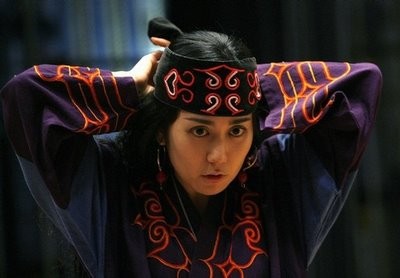
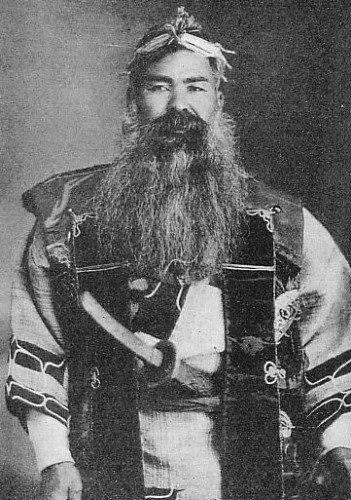

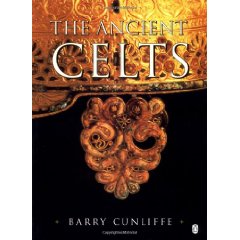
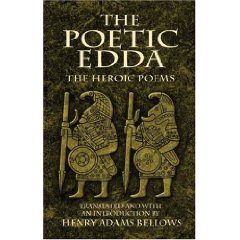


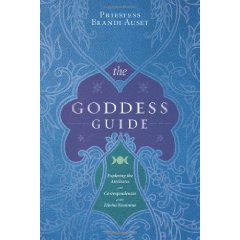
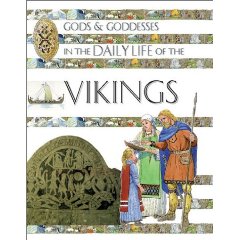


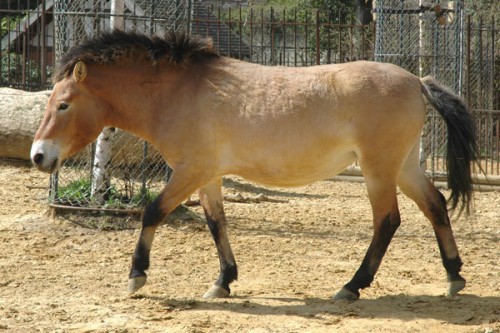

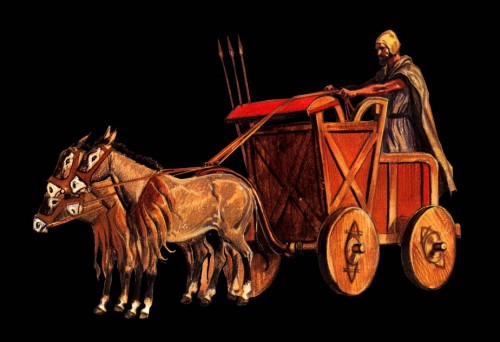

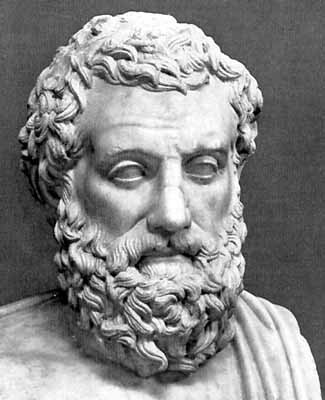 Greek tragedy is all but forgotten in mainstream culture, but there is a very good reason for looking at it again with fresh eyes. The reasons for this are manifold, but they basically have to do with anti-materialism and the culture of compression. To put it bluntly, reading Greek tragedy can give literally anyone a crash course in Western civilization which is short, pithy, and terribly apt.
Greek tragedy is all but forgotten in mainstream culture, but there is a very good reason for looking at it again with fresh eyes. The reasons for this are manifold, but they basically have to do with anti-materialism and the culture of compression. To put it bluntly, reading Greek tragedy can give literally anyone a crash course in Western civilization which is short, pithy, and terribly apt.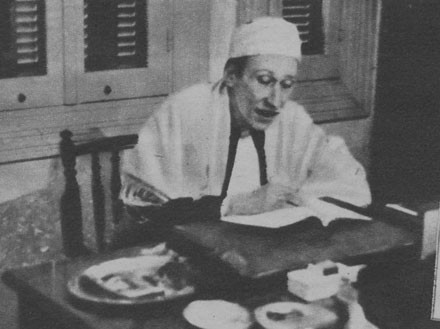
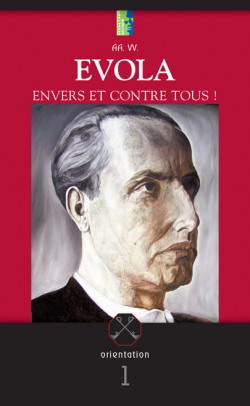
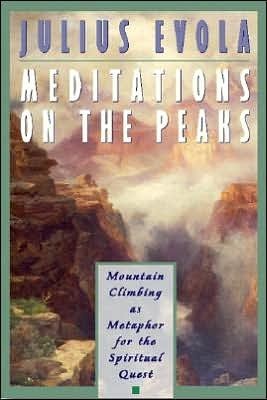 In un’occasione Evola cita la teoria giuridica di Carl Schmitt dell’international law . Il filosofo della politica tedesco aveva espresso l’idea della caduta del diritto internazionale europeo consuetudinario avvenuta, all’incirca, dopo il 1890, e la conseguente affermazione di un diritto internazionale più o meno ufficializzato. «Noi però qui non siamo interamente del parere dello Schmitt», scrive Evola, spiegando che «di contro all’opinione di molti, nei riguardi dell’azione svolta da Bismarck, sia all’interno della Germania che in Europa, non tutte le cose sono “in ordine”. […]. Più che Bismarck, a noi sembra che, se mai, Metternich sia stato l’ultimo “Europeo”, vale a dire l’ultimo uomo politico che seppe sentire la necessità di una solidarietà delle nazioni europee non astratta, o dettata solo da ragioni di politica “realistica” e da interessi materiali, ma rifacentesi anche a delle idee e alla volontà di mantenere il migliore retaggio tradizionale dell’Europa» . Contrariamente a quanto sostenuto da Baillet , Evola fu dunque piuttosto critico nei confronti di Bismarck, che non ebbe, secondo la visione tradizionale evoliana, il coraggio di opporsi in modo sistematico e rigoroso al mondo moderno e della sovversione (nella sua forma economico-capitalistica), ma dovette in alcuni casi venire a patti con esso.
In un’occasione Evola cita la teoria giuridica di Carl Schmitt dell’international law . Il filosofo della politica tedesco aveva espresso l’idea della caduta del diritto internazionale europeo consuetudinario avvenuta, all’incirca, dopo il 1890, e la conseguente affermazione di un diritto internazionale più o meno ufficializzato. «Noi però qui non siamo interamente del parere dello Schmitt», scrive Evola, spiegando che «di contro all’opinione di molti, nei riguardi dell’azione svolta da Bismarck, sia all’interno della Germania che in Europa, non tutte le cose sono “in ordine”. […]. Più che Bismarck, a noi sembra che, se mai, Metternich sia stato l’ultimo “Europeo”, vale a dire l’ultimo uomo politico che seppe sentire la necessità di una solidarietà delle nazioni europee non astratta, o dettata solo da ragioni di politica “realistica” e da interessi materiali, ma rifacentesi anche a delle idee e alla volontà di mantenere il migliore retaggio tradizionale dell’Europa» . Contrariamente a quanto sostenuto da Baillet , Evola fu dunque piuttosto critico nei confronti di Bismarck, che non ebbe, secondo la visione tradizionale evoliana, il coraggio di opporsi in modo sistematico e rigoroso al mondo moderno e della sovversione (nella sua forma economico-capitalistica), ma dovette in alcuni casi venire a patti con esso. Men kent onze bezwaren tegen bepaalde vormen van modern heidendom, die eigenlijk meer te maken hebben met een folkloristische beleving van iets dat er misschien in die vormen nooit is geweest. Bepaalde vormen van modern heidendom moeten inderdaad gezien worden als een emanatie van de “Tweede religiositeit”, zoals Oswald Spengler ze meende te moeten omschrijven. En bij Wende was ik bepaald op mijn hoede, op mijn ‘qui-vive’ door de vrij bombastische omschrijving als het halfjaarlijks “Odalistisch vormingsblad van de Werkgroep Hagal”.
Men kent onze bezwaren tegen bepaalde vormen van modern heidendom, die eigenlijk meer te maken hebben met een folkloristische beleving van iets dat er misschien in die vormen nooit is geweest. Bepaalde vormen van modern heidendom moeten inderdaad gezien worden als een emanatie van de “Tweede religiositeit”, zoals Oswald Spengler ze meende te moeten omschrijven. En bij Wende was ik bepaald op mijn hoede, op mijn ‘qui-vive’ door de vrij bombastische omschrijving als het halfjaarlijks “Odalistisch vormingsblad van de Werkgroep Hagal”.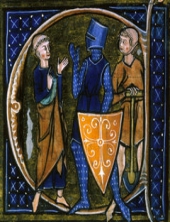
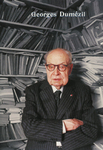


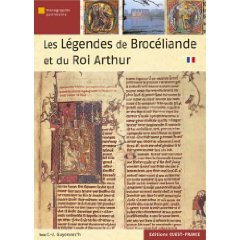
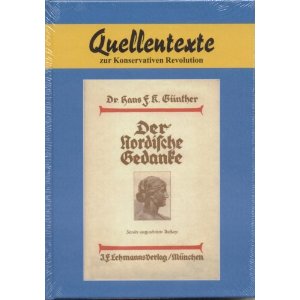
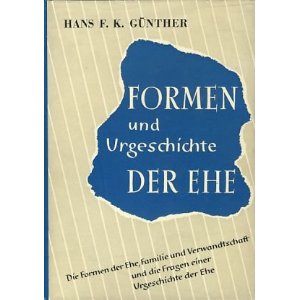
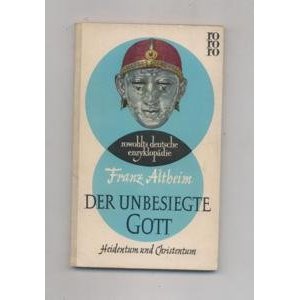
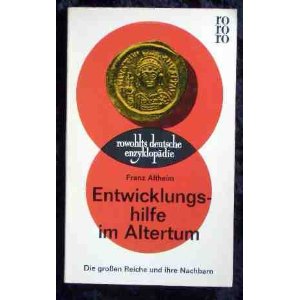
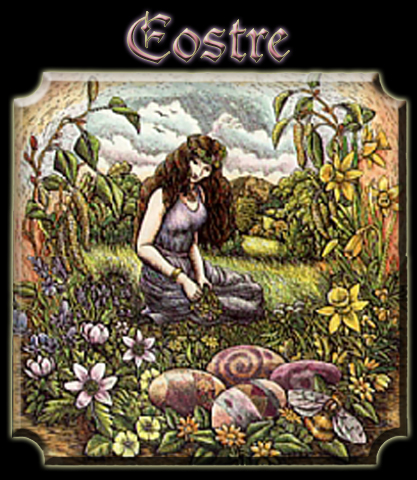
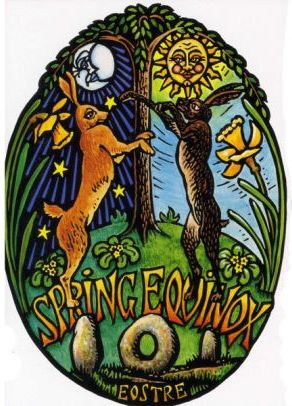


Man’s Devolution Across Cycles:
Radical Traditionalism on Anthropogenesis
Michael Bell
Ex: http://www.counter-currents.com/
The other theory is “Divergent Evolution,” which posits that the various races of mankind were spawned out of continuous admixtures between the different proto-humans (Homo-erectus, Cro-Magnon, Neanderthal, etc.) many millennia ago. The countless hybrid amalgams then underwent localized evolution like the single ancestor of the “Out of Africa” process.
While these hypotheses are considered to be at loggerheads, they are united by one key concept: the idea of progress. While each gives a different origin to mankind, both proceed from the assumption that as time goes on, mankind has become better. Although evolutionary theory does not imply that superior adaptations are also superior in terms of intelligence or beauty, this notion is particularly hard to shake with regard to human evolution.
Radical Traditionalism rejects the modernist assumption of progressive human evolution, regarding it as the exact opposite of how the universe functions. For Traditionalism, all things begin at their zenith and gradually degenerate, through a series of stages, into mere shadows of their former glory, a pattern no less true of human beings. The purpose of this essay is to explain how this rule has applied to mankind, who has not risen to mastery of the world from the lowly origins of some apelike ancestor, but rather has fallen from godhood into his current, all-too-human condition.
To do so, it will first be necessary to describe the Radical Traditionalist understanding of history. Like all tenets of Traditionalism, this conception of history is held to be a revealed truth passed down through a chain of initiation. What recommends the Traditionalist outlook to the non-initiate is its coherence and explanatory power. In the following essay, I show that Traditionalism explains archaeological and historical records and harmonizes with ancient myths as well. The modern empiricist will likely disregard such myths as the fancies of primitive imaginations, but that begs the question, for it is just another version of the progress thesis that Traditionalism rejects.
Cyclical History
Radical Traditionalism shares the same view of human history as our ancient forerunners from nearly every corner of the globe. As opposed to the linear model of history—whether ruled by an overriding purpose of by mere chance—the ancients accepted a cyclical model. This is evident in the texts of virtually every civilized race. The Hindus traced man’s descent across four ages or yugas, from the age of Truth (Satya Yuga) to the Dark Age (Kali Yuga), with the series comprising a single Great Age (Mahayuga). The Hellenic Hesiod, in his Works and Days, described the procession from a Golden Age to Silver, Bronze, and Iron Ages, which corresponds to the Persian rendition of the cycles. The Old Testament reveals that the Semitic peoples also shared this cyclical understanding. In a dream experienced by the Chaldean king Nebuchadnezzar, there stood a statue with a head made of gold, a chest and arms of silver, thighs of bronze, and legs and feet made of iron and clay, all of which eventually crumbled upon being struck by a stone.[1] The list can go on, with discussions of peoples from the Aztecs to the Japanese, but the examples provided are sufficient to reveal the universality of this cyclical concept.
The ancients also agreed that with each successive age, man becomes more and more distant from a primordial state of perfection. In the Golden Age, man lived in harmony with divine beings and according to absolute, transcendent principles that brought happiness, wholeness, and near immortality to individuals while it brought order and prosperity to collective life. With the ushering in of the Silver Age came a fall from this state of grace and the establishment of an imperfect existence, where those old principles were abandoned, the gods lost much of their divine nature, and man took a step away from cosmic harmony toward chaos. For the purposes of this essay, we shall elaborate on the Golden and Silver Ages, for it was in these prehistoric periods that humanity underwent processes that bestowed our multitude of contemporary mental and physical forms upon us.
The Atlantean Silver Age
The Golden Age was a period of perfection on all levels. Human life was directly guided by the gods themselves and therefore orderly, plentiful, and enjoyable. Though the Golden Age was long ago and its location long since lost, its memory is kept alive by the mythical traditions of nearly every people on the planet. Hesiod, writing in the eighth century B.C., describes this “Age of Gold” thusly:
Men spent a Life like Gods in Saturn’s Reign,
Nor felt their Mind a Care, nor Body Pain;
The fields, as yet untill’d, their Fruits afford,
And fill a sumptuous, and enevy’d, Board.
From Labour free they all Delights enjoy,
Nor could the Ills of Time and Peace destroy;
They dy, or rather seem to dy, they seem
From hence transporting in a pleasing Dream.
Thus, crown’d with Happyness their ev’ry Day,
Serer, and joyful, pass’d their Lives away.[2]
Hesiod is one of few writers to directly mention the Golden Age and describe its qualities. Using his work as a reference point, however, the scholar can detect allusions to the same period in other ancient texts. For example, in Book 6 of the Mahabharata, the author discusses Mount Meru, “made of gold,” where the “measure of human life is 10,000 years” and “men are all of a golden complexion . . . [and] without sickness, without sorrow, and always cheerful.”[3] Outside the Aryan tradition, the Book of Lieh-Tzu (fourth century B.C.) describes what appear to be the inhabitants of the Golden Age:
All were equally untouched by the emotions of love and sympathy, of jealousy and fear. Water had no power to drown them, nor fire to burn; cuts and blows caused them neither injury nor pain, scratching or tickling could not make them itch. They bestrode the air as though treading on solid earth; they were cradled in space as though resting in a bed. Clouds and mist obstructed not their vision, thunder-peals could not stun their ears, physical beauty disturbed not their hearts, mountains and valleys hindered not their steps. They moved about like gods.[4]
Finally, we have in the Semitic memory the Garden of Eden, where man was first established on Earth at God’s decree. According to the Book of Genesis, those who dwelled there lived for nearly 1000 years in a blissful paradise.[5] The allusions to this pristine setting are numerous, from the Avestic recollection of a distant period in the Airyana Vaego, where man was under the aegis of the creator god Ahura Mazda himself, to the Buddhist remembrance of Shambhala, roughly translated “land of peace” or “tranquility.”
In tracing anthropogenesis, it is crucial to establish the physical location of this primordial paradise. Unfortunately, no material archaeological evidence lends any insight into this question. We are thus forced to rely solely on the mythological memories of our ancestors. Among the Greeks, this land “beyond the pole” where neither “pestilence nor wasting eld approach” the inhabitants was referred to as Hyperborea, meaning “beyond the north wind.”[6]
In his book Arctic Home in the Vedas, the Hindu nationalist and scholar Bal Gangadhar Tilak, writing in the early twentieth century, presents a vast array of clues from Vedic and Avestic literature to argue that the primordial paradise was located in the Arctic. Tilak explains that if one were stationed at the North Pole, the sky above would appear to be rotating around one “from left to right, somewhat like the motion of a hat or umbrella turned over one’s head.”[7] He also explains that one would see the sun continuously in the sky for roughly six months, followed by a period of dusk, night, and dawn of two months each. Thus for the Arctic inhabitant, a full year would appear to unfold as a single day.
With these astral phenomena in mind, Tilak proceeds to pinpoint allusions to them in the Aryan texts. For example, in the Mahabharata, Mount Meru is discussed in one passage as a place where the “sun and the moon go round from left to right every day and so do all the stars” and “The day and the night are together equal to a year to the residents of the place.”[8] He supports this with a selection from the post-Vedic Laws of Manu, which says “A year (human) is a day and a night of the Gods; thus are the two divided, the northern passage of the sun is the day and the southern the night.”[9] Tilak corroborates this evidence with clues from Persian tradition. From the Avesta we have reference to an “enclosure” in the Airyana Vaejo in which “the stars, the moon, and the sun are only once (a year) seen to rise and set, and a year seems only as a day.”[10]
The present conditions in the Arctic make it uninhabitable. According to Tilak, however, modern scientists have conceded that at one time in distant prehistory, perhaps in pre-Glacial times, the region was hospitable, fertile, and filled with life. Among these scientists is the geologist James Geikie, who in 1893 argued that “during the Inter-Glacial period the climate was characterized by clement winters and cool summers so that the tropical plants and animals, like elephants, rhinoceroses, and hippopotamuses, ranged over the whole of the Arctic region, and in spite of numerous fierce carnivora, the Paleolithic man had no unpleasant habitation there.”[11] Joscelyn Godwin confirms that such conditions were indeed possible when, as “numerous authorities” claim, “the earth was not tilted, but spun perfectly upright with . . . its axis perpendicular to the plane of its orbit around the sun,” which was the case in “primordial times.”[12]
Since the Arctic Golden Age took place many eons before recorded history, assessing its actual place in time is troublesome. Using Hindu calculations, Traditionalist René Guénon concluded that this Golden Age took place nearly 65,000 years ago.[13] We must prefer this number over Tilak’s hypothesized 12,000 years, as the latter would place the subsequent Silver Age far too near recorded history to be possible, especially considering that the fourth, Dark Age, “is said” to have begun only 6000 years ago.[14] In addition, it would be implausible to place man’s origins only 12,000 years ago, as the devolutionary processes that reduced him to his modern form could not have fully unfolded within that short span.
Eventually, the Arctic seat and its Golden Age met a catastrophic end for a number of reasons, both physical and metaphysical. In his magnum opus, Revolt Against the Modern World, Julius Evola argues that the Earth’s axis shifted positions slightly, ushering in a cataclysmic climate change.[15] As a result, the Polar Regions became inhospitable to most life forms. In ancient texts one finds numerous references to this tilting of the axis. The Taoist tradition recalls when the “pillar which connects Heaven and earth” was “snapped” (the axis is essentially an invisible pillar that unites the sky with Earth), explaining “why Heaven dips downwards to the north-west, so that sun, moon and stars travel towards that quarter.”[16] The Hebrew story of the crumbling of the Tower of Babel, which connected Heaven to Earth, is another example. The Avesta explains the onset of the climate change in a dialog between the creator god and his disciple, king Yima: “And Ahura Mazda spake unto Yima, saying: ‘O fair Yima, son of Vîvanghat! Upon the material world the fatal winters are going to fall, that shall bring the fierce, foul frost; upon the material world the fatal winters are going to fall, that shall make snow-flakes fall thick.”[17] As this event would have occurred tens of thousands of years ago, it likely coincides with the beginning of one of the various Ice Ages.
One more event, metaphysical in nature, is explained to us by the Old Testament. It tells of how the “sons of God” mated with the “daughters of man” and spawned a race of mighty giants, whose evil behavior, driven by the appetites of the flesh, made God unleash elemental forces against them.[18] These sons are likely parallels to the “celestial gods” who dwelled in Airyana Vaego, as well as the other gods and demigods that the ancient texts say lived in this primordial paradise. From the clues above, we can paint the following picture regarding the end of the Golden Age. Human beings lived harmoniously with divine beings in the Arctic paradise until the two entered sexual unions that produced powerful, semi-divine half-breeds. This action caused such a rupture in the cosmic balance of the universe that the Earth’s axis shifted, bringing on the Ice Age that turned the paradise into a cold wasteland.
Following the destruction of Airyana Vaego/Mount Meru/Eden/ Hyperborea, the semi-divine survivors were forced to migrate southwards. In their exodus they retained the memory of their Polar homeland, evinced by polar symbols such as the swastika (a bent cross revolving about a fixed point) and the axial World Tree, which traditionally links Midgard (Earth) with the realms above. Some settled in areas of North America and Northern Europe, but the majority regrouped in an Atlantic location to reconstitute their civilization.
If we are to make any conjectures about the race of our Hyperboreans, we must look to those people who carried with them the memory of the primordial home. By Hyperboreans, I mean the Arctic race of “men” who lived among the gods. Discerning the features of the latter is impossible, as they are not bound by the limitations of material existence; they could have been anthropomorphic, ethereal, or capable of alternating between the two. Our only clue is that they were “Golden,” which may be an allusion to vibrant blondness.[19]
In all of the civilizations discussed above, as well as in others, our concern would be with the upper castes, namely the priests and the military aristocracy, who preserved the memories of Hyperborea. Among the Aryan peoples of Europe, this task is simpler due to the abundance of physical evidence available, namely statues, frescoes, engravings, and physical remains. The ancestors of classical Greece and Rome, Germania, and Celtia, who brought with them the worship of Zeus, Saturn, Tuisto, and Dana, were evidently of a tall, robust, fair-haired, and fair-skinned Nordic stock. The fourth century A.D. physician, Adamantios, gives us a picture of the early Hellenes, claiming that “Wherever the Hellenic and Ionic race has been kept pure, we see proper tall men of fairly broad and straight build, neatly made, of fairly light skin and blond; the flesh is rather firm, the limbs straight, the extremities well made.”[20]
As we push further east, the evidence becomes less plentiful but nonetheless revealing. The Brahmins who carried to India the oldest extant accounts of the Golden Age in Mount Meru were of that same Nordic race. If one juxtaposes a modern Brahmin or Kshatriya with a member of the lower castes, it often appears that the former has something quite different “in his woodpile.” He would tend to be taller and fairer in complexion and occasionally possess blue or green eyes and, more rarely still, fair hair. Lower caste individuals generally tend to be shorter and darker, and although many have fine Caucasoid features, others display an Australoid phenotype. Kaiyata, writing in the second century B.C., affirms that White Brahmins once “flourished in a previous cycle of existence” but that their “descendants are rarely met with even now.”[21] The sixth century B.C. Kshatriya noble, Siddhartha Gautama (Buddha), is described in the Pali Canon as having abhi nila netto, or “very blue eyes,” a typical Nordic trait.
In the Far East, we have a non-Aryan milieu entirely. However, there is ample genetic evidence that tall, fair Whites roamed both Western[22] and Eastern[23] China long before the present-day Mongoloids. Taken with the racial description of the Buddha, we have enough to surmise a heavy influence upon China’s culture by Nordics or a stalwart white race akin to them. Since Buddhism influenced the development of Japanese religious culture, the same rule applies to Japan.
The list can go on, but we have already given sufficient proof that the bearers of the oldest and clearest recollections of Hyperborea were tall, fair, blue-eyed, and red or blonde-haired whites. It would thus be fair to conclude that the Hyperboreans, from whom they claim descent, were likely of a proto-Nordic race.
The Atlantean Silver Age
Hesiod’s poem continues with a discussion of a second age, “which the Celestials call the Silver years.”[24] In this period, man became subject to sickness and mortality. He no longer lived according to the absolute principles provided by his divine tutors during the Golden Age, and paid the gods themselves “no honors.”[25]
It is with the dawning of this era that the Arctic inhabitants, now a race mixed with divine and human elements, traveled as refugees from their destroyed Urheimat to a southern location somewhere in the Atlantic. There they founded the famed city of Atlantis in mimicry of their original homeland. After establishing themselves, they embarked on a colonizing campaign across the world, passing the “Pillars of Hercules” (the Straits of Gibraltar) and reaching deep into the Mediterranean Sea. There they established their hegemony, holding “sway . . . over the country within the Pillars as far as Egypt and Tyrrhenia.”[26] It is reasonable to assume that they also sent voyagers to the Americas, as Atlantis would have lain between them and Europe.
As this new civilization was built before recorded history, it is difficult to ascertain its precise chronology. Plato asserts that Atlantis crumbled 9000 years before his own time, while Guénon, relying once again on Vedic mathematics, says this occurred several thousand years earlier. This would, therefore, place its origins even further back. Regardless, our concern is the racial state of those dwelling within Atlantis.
The Boreal race inhabiting the Arctic was probably quite Nordic in appearance. When they mixed with the gods, however, they spawned “men of monstrous size” according to Hesiod, paralleling the Nephilim of the book of Genesis. Given that modern Nordics are some of the tallest humans, and that they themselves are merely degenerated descendants of something greater, the mythological testimony seems plausible. Thus, the Atlanteans sired from the union of gods and men were likely much taller than today’s tallest people and probably more muscular; they would have been frightfully imposing giants. Further credence is given to this idea by the fact that in Numbers, the Hebrews refer to the Anakim as “Nephilim” due to their immense stature, which made the Hebrews feel like “grasshoppers.”
These giants were not the norm, however. Plato speaks of them becoming “diluted too often and too much with the mortal admixture,” suggesting that unmixed Boreal humans also lived within Atlantean borders. This was also the cause of Atlantis’s inevitable downfall, much like that of Hyperborea. After several generations of unchecked miscegenation with their human subjects, the Atlantean giants forfeited their angelic constitution and “grew visibly debased, for they were losing the fairest of their precious gifts.”[27] When this happened, the cosmic balance was once again disrupted. Evidence from the myths, sometimes suggestive and other times affirmative, leads us to believe that a massive earthquake occurred, causing Atlantis, the seat of the Silver Age, to sink beneath the Atlantic. The Mesopotamian story of the deluge that submerged the first cult-centers, linked to the Biblical flood that Noah overcame, is an example.[28]
With the Atlantean admixture with humans came a race almost entirely sapped of divinity. They were the direct ancestors of modern Northern Europeans (proto-Nordics), retaining the fair complexion and keen intellect but losing their titanic build and strength. Forced to flee their sinking kingdom, these people migrated in an East-West trajectory, bringing significant numbers into the Americas and Europe.
There is some physical and genetic evidence to substantiate this claim.
Firstly, there is the link between the 18,000 year old Solutrean weapon culture of France and the 13,500 year old American weapon culture of Clovis, New Mexico. Archaeologists Bruce Bradley and Dennis Stanford concluded in 2004 that there was a striking similarity between the manufacturing methods of each culture, particularly because they both used a very difficult and rare technique called overshot flaking.[29] They also noted that a weapon culture discovered in Virginia, dating to 16,000 years ago, appeared to be a “technological midpoint between the French Solutrean style and the Clovis points.”[30]
Our second piece of evidence is genetic. Scientists have found that among the genes of Native American populations, the mitochondrial DNA (mtDNA) of haplogroups A through D, which are common in Asia, predominates. However, it has been found that a significant number of Native Americans in the Eastern United States possess mtDNA from haplogroup X, which is only also found in Western European populations and in some parts of Mongolia. One might argue that the presence of this mtDNA in Mongolia debunks the argument that Whites settled North America first, but this simply is not so when combined with all the other evidence provided here. Significantly, the mtDNA of pre-Columbian Native American skeletons has been studied, revealing that X was present in that race’s genes before the conquistadores arrived.[31]
Thirdly, we have the controversial Kennewick Man corpse. This 9300 year old skeleton, unearthed in Washington State in 1996, was discovered by anthropologist James Chatters to be of Caucasoid origin. In a clay reconstruction the face even ended up resembling that of British actor, Patrick Stewart.[32]
These bits of evidence indicate that a race of people predating the Mongoloid Native Americans split up and branched out into Europe and America from the Atlantic. They carried with them the same genes and tool-making methods, which they adapted to the available resources. An alternative possibility would be that this Upper Paleolithic race migrated first into Europe, with a group then splitting off and migrating eastward to America.
The Children from the Earth
As our Hyperborean ancestors ventured across the globe, first to the Atlantic and then in an East-West trajectory, they encountered preexisting societies in the lands they traversed. As the Golden and Silver Ages took place tens of thousands of years ago, these indigenous peoples were likely from the countless breeds of hominids, including Neanderthalensis and Soloensis. Whatever stock of proto-human they were, our ancestors characterized them as either chthonic, Earth-spawned beings or creatures originating from the chaotic waters. In most cases, their interaction resulted in conflict, but in others the two coexisted and even intermixed. These events have been vividly preserved in the various myths of Hyperborean origin: the epic struggle between the Tuatha da Danaan and the Fomors (people “from the water”); the battles between the Olympians and the various monsters spawned by Gaia (Earth); the vitriolic relationship between the Aesir (the Nordic sky gods) and the Vanir (trolls, giants, and other monsters); even the Anglo-Saxon epic Beowulf recaptures this theme in the fight between the hero and Grendel, a humanoid demon that lives beneath a lake.
Wherever the newcomers settled down and mixed with the natives, new races were spawned representing further bastardizations of the semi-divine Arctic prototype. Thus our giant, proto-Nordic race ramified into various hybrid breeds, each differing in appearance and attributes depending upon the areas they settled in, the stocks with which they mixed, and just how far they allowed this miscegenation to continue. From these mixed unions sprung the various Mongoloid, Semitic, Australoid, and Negroid races, with the latter two probably representing the farthest debasement from the original Hyperborean phenotype. In instances where mixing was less pronounced, or where adaptation to the environment and other factors had their effect, the various white races were generated (i.e. Nordics, Mediterraneans, Alpines, etc.).
Conclusions
In summary, anthropogenesis was a process of devolution, not evolution. Sixty-five thousand years ago, a race of gods described as “Golden” lived harmoniously with a race of advanced early humans, characterized by fair skin, fair hair, and light eyes, in a joyous, orderly Golden Age somewhere in the Arctic. At some point, the two races intermixed and bred giant demigods. As the Arctic seat froze over in one of the Ice Ages, these demigods led the remaining human survivors south into the Atlantic, with some remaining in different lands along the way. Those who did so, encountered autochthonous races with whom they ultimately mixed, debasing their divine nature and giving rise to a new, Silver Age that corresponded to the Atlantean civilization vividly described by Plato and remembered by many traditions as a “Western” land. It sent explorers out across the world from the Americas to the Far East. Thousands of years later this second super-civilization floundered due to continued mixing between the demigods and their human companions, generating the Upper Paleolithic proto-Nordic race.
With the sinking of Atlantis, these beings, now human in nature but still retaining a divine spark, migrated in an East-West trajectory. On this second great exodus, corresponding to a Bronze Age, some intermarried with indigenous peoples and further debased their line while others maintained their purity. The latter would later erect the most revered civilizations and empires of recorded history, such as Sumeria, Vedic India, Egypt, Hellas, Rome, China, and much later, the feudal regimes of Western Europe. The mixed peoples would be remembered as the Pelasgians, Minoans, Etruscans, Hebrews, Arameans, Iberians, and all other chthonic ethnicities that were subdued and restricted to a plebeian caste. Unfortunately, the vast empires noted above served as little more than dim reflections of the original Hyperborean civilization, precluded from fulfilling their true potential by the prevailing metaphysical conditions of the age in which they flourished.
We have now entered into the terminal phase of the Dark Age, and the type of humanity that is to inherit the succeeding Mahayuga remains to be seen; however, if the races of the world continue down the path of profligate inter-mixing, that divine spark, which drove the white peoples of the world to erect history’s grandest civilizations, and is now harbored by so few, will be completely extinguished. Humanity will then be forced to pass the torch of greatness to a succeeding species.
Notes
1. Dan. 2:35.
2. Hesiod, Works and Days, 1.154–63.
3. Mahabharata, 6.1.6.
4. Lieh-Tzu, The Book of Lieh-Tzu, trans. Lionel Giles (1912), 36.
5. Gen. 5:5.
6. Pindar, Pythian Odes, 10.29, 10.41.
7. Lokamanya Bal Gangadhar Tilak, Arctic Home in the Vedas (Poona City, India: 1903), 43.
8. Mahabharata, 3.7.163. Quoted in Tilak, 64.
9. The Laws of Manu, 1.67. Quoted in Tilak, 63.
10. Vendidad, 2.40. Quoted in Tilak, 350.
11. James Geikie, Fragments of Earth Lore: Sketches and Addresses, Geological and Geographical (1893), 266. Quoted in Tilak, 22–23.
12. Joscelyn Godwin, Arktos: The Polar Myth in Science, Symbolism, and Nazi Survival (Kempton: Adventures Unlimited Press, 1996), 13.
13. René Guénon, Traditional Forms and Cosmic Cycles (Paris: Gallimard, 1970), 24.
14. René Guénon, The Crisis of the Modern World, trans. Marco Pallis (Hillsdale: Sophia Perennis, 2001), 7.
15. Julius Evola, Revolt Against the Modern World (Rochester, Vt.: Inner Traditions International, 1995), 189.
16. Lieh-Tzu, 79.
17. Vendidad, 2.22.
18. Gen. 6: 2–7.
19. Julius Evola, Revolt Against the Modern World, 185. In his chapter “The Golden Age,” Evola contends that gold symbolizes the gods’ divine nature, which is “incorruptible, solar, luminous, and bright.” I see no reason, however, to reject the possibility that it could be a reference to something phenotypical.
20. Hans F. K. Gunther, The Racial Elements of European History, trans. G. C. Wheeler (London: Methuen, 1927), 157.
21. R. P. Chanda, The Indo-Aryan Races: A Study of the Origin of Indo-Aryan People and Institutions, Part I (Rajshahi: Varendra Research Society, 1916), 24.
22. “Genetic Testing Reveals Awkward Truth About Xinjians’s Famous Mummies,” Khaleej Times Online, April 19, 2005.
23. Li Wang et al, “Genetic Structure of a 2500-Year-Old Human Population in China and Its Spatiotemporal Changes,” Molecular Biology and Evolution, 17 (2000): 1396–1400.
24. Hesiod, Works and Days, 1.175.
25. Hesiod, Works and Days, 1.189.
26. Plato, Timaeus, 25.
27. Plato, Critias, 120.
28. “A Sumerian Myth: The Deluge,” trans. S. N. Kramer, The Ancient Near East, ed. James Pritchard, vol. 1 (Princeton: Princeton University Press, 1953), 29.
29. Bruce Bradley and Dennis Stanford, “The North Atlantic ice-edge corridor: a possible Paleolithic route to the New World,” World Archaeology 36 (2004): 465.
30. “Stone Age Columbus-programme summary,” BBC, 21 Nov. 2002. <http://www.bbc.co.uk/science/horizon/2002/columbus.shtml>. 1 Sept. 2008.
31. Maggie Villiger, “Tracing the Genes,” PBS, July 20, 2004, http://www.pbs.org/saf/1406/features/dna.htm.
32. Timothy Egan, “Old Skull Gets White Looks, Stirring Dispute,” The New York Times, April 2, 1998.
TOQ, vol. 10, no. 1 (Spring 2010)